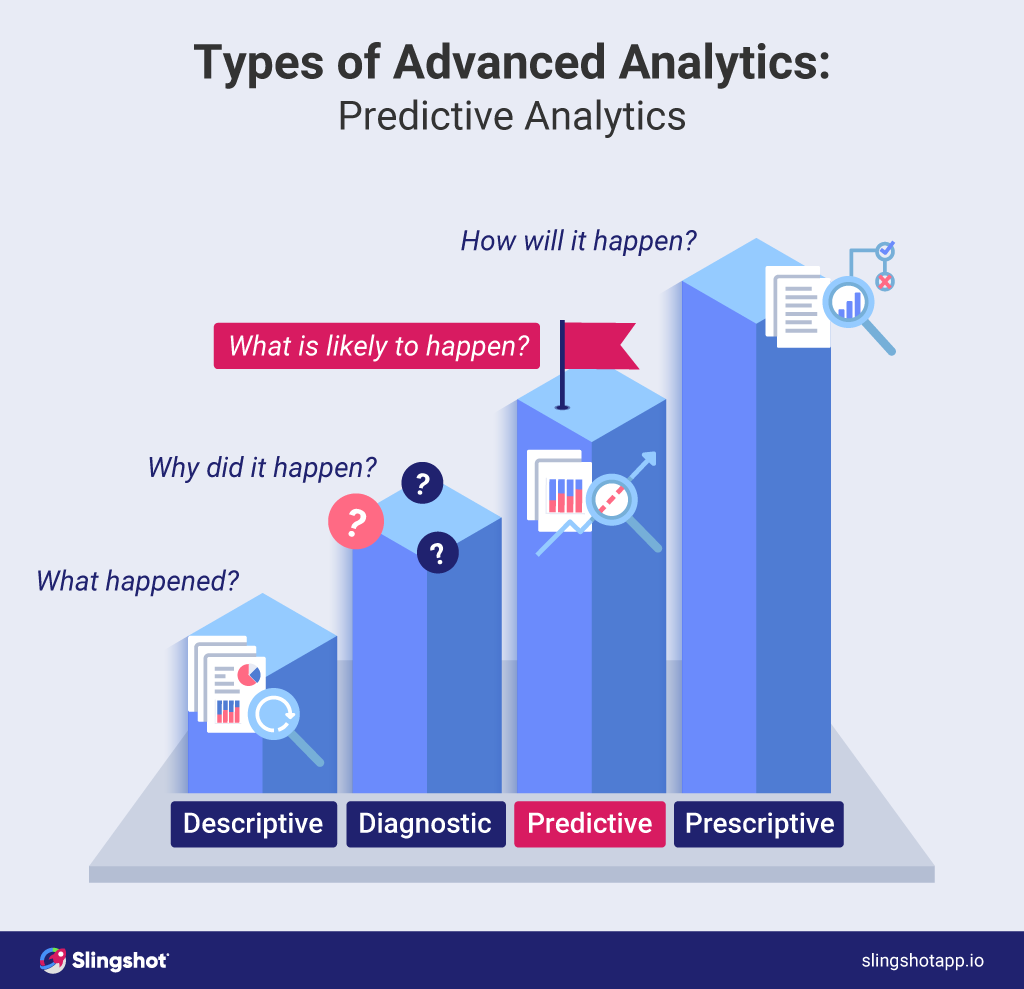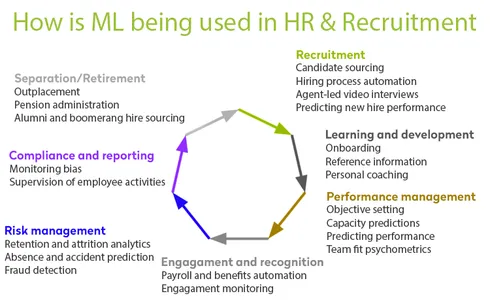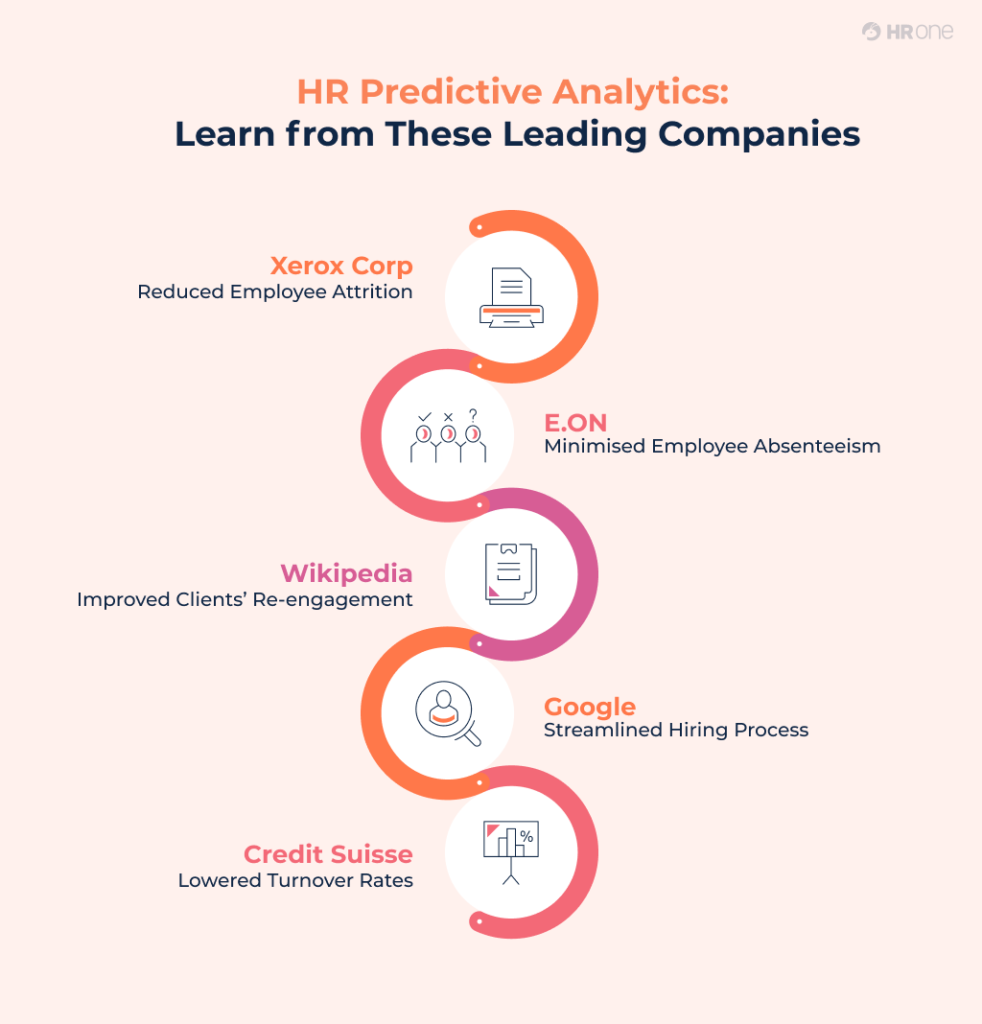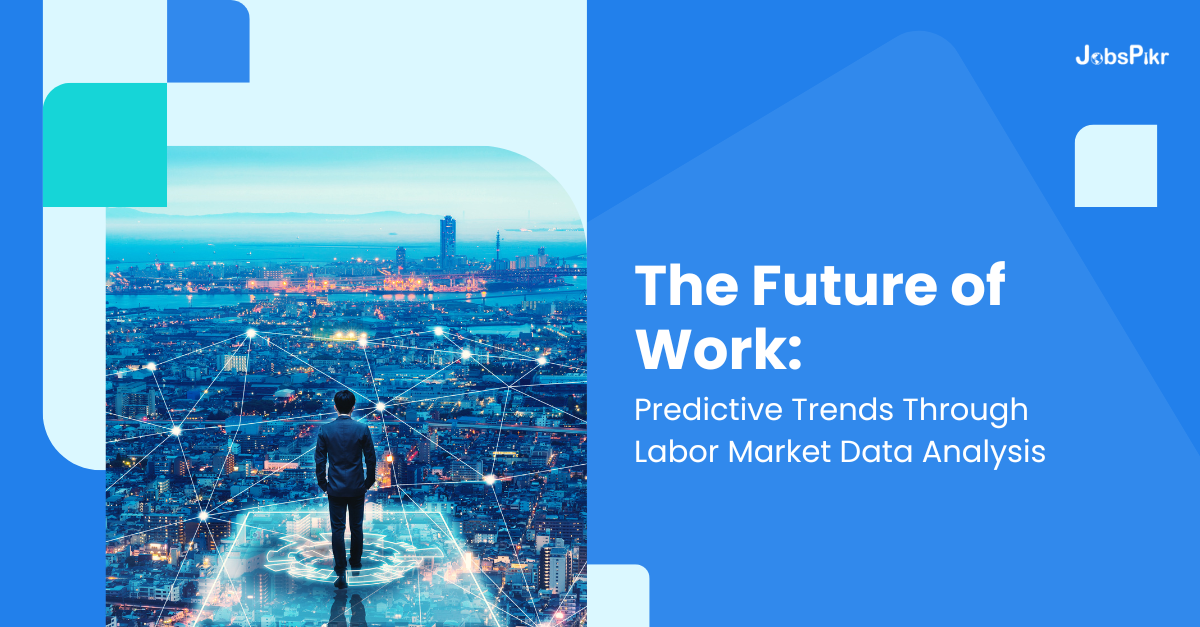What is Predictive Analytics?
Predictive analytics is revolutionizing the way businesses approach the future of work. Through data analysis, companies can identify significant trends that will shape their workforce dynamics. Emerging technologies such as artificial intelligence, machine learning, and big data analytics are central to this transformation. These tools allow organizations to forecast skill shortages, optimize workforce planning, and enhance employee engagement.
Key trends in the future of work include:
- Remote Work: Predicted to remain prevalent due to its demonstrated effectiveness.
- Skill-Based Hiring: Shifting focus from traditional qualifications to specific skills.
- Automation: Increasingly significant in routine tasks, impacting job roles and employment patterns.

Image Source: Slingshot
The Role of Data Analysis in Predictive Trends
Data analysis is crucial in predicting trends in the future of work, offering valuable insights that can drive strategic decisions and improve overall efficiency. Here are some key ways data analysis contributes:
- Identifying Patterns: Data analysis helps in identifying and understanding patterns by examining historical data.
- Forecasting Demand: Analyzing trends enables accurate forecasting of future demands within the workforce.
- Resource Allocation: Ensures optimal allocation of resources through the evaluation of past performance data.
- Employee Retention: Analyzes employee attrition rates and improves retention strategies.
- Skill Gap Identification: Identifies gaps in skills and guides training programs.
- Market Trends: Keeps organizations competitive by monitoring market changes and predicting future trends.
- Decision-making: Enhances strategic decision-making with data-driven insights.
- Risk Assessment: Assists in identifying potential risks and developing mitigation strategies.
Emerging Technologies Shaping the Future of Work
Innovative technologies are transforming the workplace landscape nad the future of work:
- Job Scraping: Utilizing advanced algorithms to extract job postings from various websites efficiently. This allows companies to stay updated with competitor job listings and emerging job roles.
- Job Data Analysis: Leveraging big data analytics to interpret job market trends. This involves assessing demand for specific skills, identifying salary benchmarks, and predicting future job growth areas.
- Automated Job Board Backfill: Implementing automation to populate job boards with relevant listings dynamically. This ensures that job boards maintain up-to-date and comprehensive job listings, enhancing user engagement and satisfaction.
These advancements are revolutionizing recruitment and hiring processes.
AI and Machine Learning in Workforce Management

Image Source: Analytics Vidhya
AI and machine learning play a crucial role in the future of work in revolutionizing workforce management by optimizing various human resource processes. Predictive analytics can forecast employee turnover, identify training needs, and enhance recruitment efficiency. For instance, algorithms can analyze vast datasets to match candidates’ skills with job requirements more accurately.
- Tasks automation: Streamlines repetitive duties like scheduling.
- Employee engagement: Analyzes feedback to predict morale issues.
- Performance evaluations: Provides data-driven insights.
These technologies offer a strategic approach to managing talent, reducing costs, and improving productivity. Leveraging AI tools allows organizations to make more informed decisions, create personalized employee experiences, and maintain a competitive edge in the evolving job market.
Remote Work and Its Long-Term Implications

Image Source: Fannie Mae
The shift to remote work, accelerated by global events, presents enduring consequences for various stakeholders. Organizations may benefit through reduced real estate costs and access to a broader talent pool unrestricted by geography. Employees often experience enhanced work-life balance, leading to potentially higher productivity and job satisfaction. However, this transition introduces challenges, such as the need for robust cybersecurity measures and potential isolation among remote workers.
Long-term, remote work could reshape urban planning, as decreased demand for office space influences commercial real estate markets. Effective management strategies will be critical to sustaining these benefits and mitigating associated risks.
Skills Transformation: Adapting to Future Demands
Market and technology evolution in the future of work necessitates a profound shift in workforce skills. Data analysis indicates an increasing emphasis on digital literacy, critical thinking, and complex problem-solving. Employers are prioritizing these competencies due to automation and artificial intelligence integration. Therefore, continuous learning and upskilling have become paramount.
Analytical skills to interpret data and creative skills to innovate are in high demand. Furthermore, soft skills such as emotional intelligence and teamwork remain crucial. Organizations must invest in training programs to help employees adapt and thrive. This shift underscores the critical need for agility in skill development.
Predictive Analytics in Employee Performance and Satisfaction

Image Source: HROne
Predictive analytics in employee performance and satisfaction leverages historical data to forecast future trends, enabling organizations to proactively address issues. By analyzing metrics such as productivity, engagement levels, and attendance, companies can pinpoint areas needing improvement. This methodology not only helps in identifying top performers but also aids in understanding the root causes of dissatisfaction.
Tools like sentiment analysis and performance dashboards provide a comprehensive view of employee well-being. Actionable insights derived from these analytics are crucial for developing targeted interventions aimed at enhancing both individual performance and overall workplace satisfaction.
Conclusion
Embracing a data-driven approach is crucial for organizations to stay competitive. By analyzing trends, businesses can anticipate changes and adapt swiftly.
Key areas to focus on include:
- Data Literacy: Cultivate a workforce skilled in data interpretation.
- Technology Integration: Implement advanced analytics tools.
- Customer Insights: Use data to understand evolving customer needs.
- Process Optimization: Enhance efficiency through predictive analytics.
- Talent Acquisition: Identify skills gaps and hire accordingly.
Enhance your data-driven decision-making with JobsPikr. Leverage real-time job market insights to stay ahead. Sign up today!



